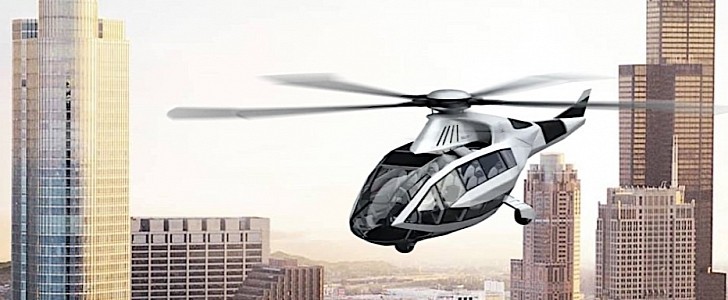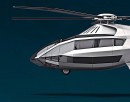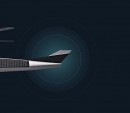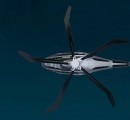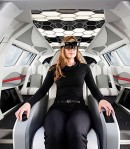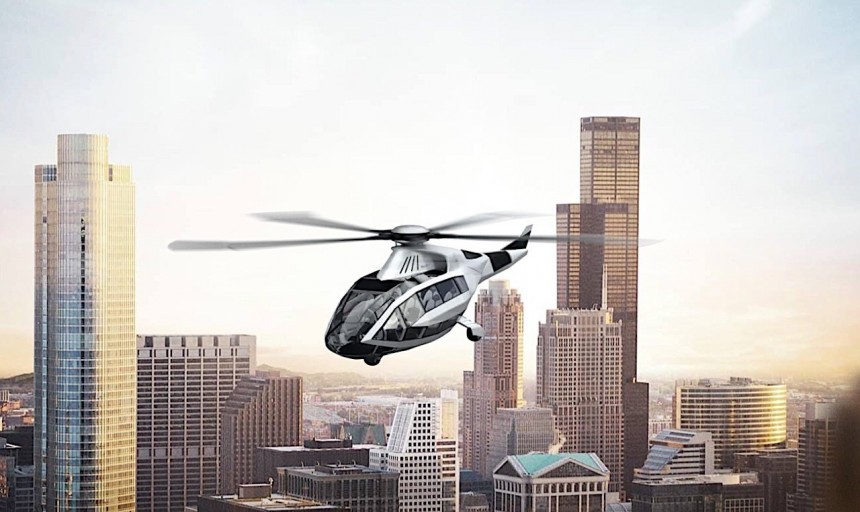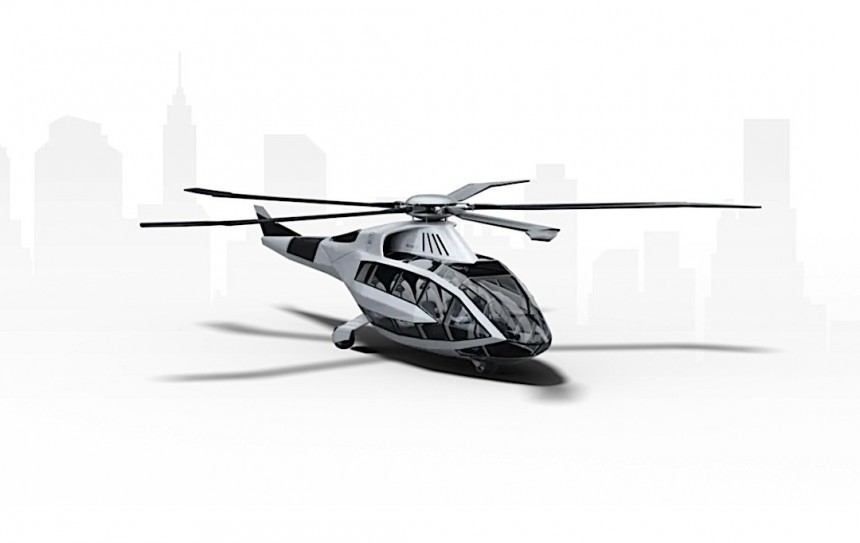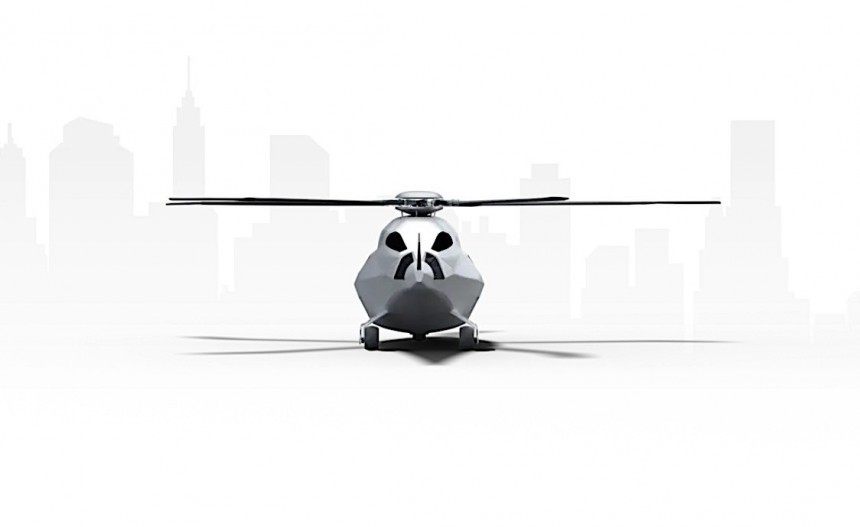As one of the driving forces of the aviation industry, Bell is expected to deliver better technologies for the future. And with the FCX-001 it first showed at the Dallas, Texas Heli-Expo in 2017, the company promises exactly that.
Most of you know the name Bell as being that of a major producer of helicopters. Sure, it does other things too, but it is this kind of machines, for civilian and military use, that put Bell on the map of aviation. And to honor that, we’ll kick off this weekend our coverage of everything Bell is involved in at the moment on the helicopter front.
Normally, we should have started with the oldest of its birds, but because Bell is seen as an innovator, we decided to go about this differently, and start with something that may or may not come to be: the FCX-001.
Before we dive into it, keep in mind that this bird is still in concept stage, and the frame that was shown back in 2017 is not exactly a functional machine. We also have no knowledge of Bell actually working on a prototype for this.
First up, the general design. What we see is not as drastically different than the helicopters we have today, with the almost all-glass bubble that is the cockpit at the front, landing wheels underneath, the rotor blades on top, and a tail extending at the rear. But wait! Where’s the tail rotor?
As some of you might know already, there are two rotors on a helicopter. The top, large one, which is meant to provide lift, and a smaller one at the rear, placed there as an anti-torque device, meaning it’s there to stop the helicopter from being thrown into a spin by the force of the main rotor.
This design has been around, with slight variations, ever since 1912, and it’s unlikely it will go away any time soon as, well, this is physics we’re talking about, and you generally can’t cheat that: a main rotor will always require a counteracting force.
The FCX-001 has that too, only this time it’s hidden from sight in the tail boom somewhere, in a bid to help with safety, noise, and performance parameters.
The blades of the main rotor are not exactly conventional either. Bell already has experience with morphing aircraft geometries, as for instance the military V-22 Osprey uses one geometry for helicopter flight and an entirely different one for airplane mode.
This time however, the company plans to take the transformative features and apply them to each blade individually in a bid to “optimize performance in different flight regimes.” Not only the blades, but also the inlets and aerodynamic surfaces are being eyed for such transformative features, although at the moment Bell does not say exactly what shape the technology will actually have when ready.
Moving inside, we get a layout like none other in existence. There’s only one pilot seat, smack down in the middle of the cabin, and devoid of what one might call traditional controls. That’s because Bell has envisioned this thing as being controlled by means of augmented reality and an artificial intelligence computer – there are actually three separate and independent flight computers for increased safety and, in the not so distant future, meant to give the helicopter self-flying capabilities.
Behind the pilot lies a large cabin that generally can seat eight people, but that’s relative, given how the space was envisioned as modular, meaning it can be changed to suit for carrying cargo or performing various missions.
As a touch of bling, “LED lighting in the overhead canopy can be fully customized in color and brightness depending on passenger preference,” while ventilation is ensured by means of 360-degree pop up air systems.
As for the powertrain, details are extremely scarce, given how none has been devised for the model shown a few years back. Bell is however pondering a hybrid drivetrain, comprising the usual thermal engine and electric distribution and motors.
Below is video of the official presentation of the concept in Texas, and if you like how Bell is thinking, we advise you to have a look, given how probably for a long time this will be the only way to experience the FCX-001.
Normally, we should have started with the oldest of its birds, but because Bell is seen as an innovator, we decided to go about this differently, and start with something that may or may not come to be: the FCX-001.
Before we dive into it, keep in mind that this bird is still in concept stage, and the frame that was shown back in 2017 is not exactly a functional machine. We also have no knowledge of Bell actually working on a prototype for this.
First up, the general design. What we see is not as drastically different than the helicopters we have today, with the almost all-glass bubble that is the cockpit at the front, landing wheels underneath, the rotor blades on top, and a tail extending at the rear. But wait! Where’s the tail rotor?
This design has been around, with slight variations, ever since 1912, and it’s unlikely it will go away any time soon as, well, this is physics we’re talking about, and you generally can’t cheat that: a main rotor will always require a counteracting force.
The FCX-001 has that too, only this time it’s hidden from sight in the tail boom somewhere, in a bid to help with safety, noise, and performance parameters.
The blades of the main rotor are not exactly conventional either. Bell already has experience with morphing aircraft geometries, as for instance the military V-22 Osprey uses one geometry for helicopter flight and an entirely different one for airplane mode.
Moving inside, we get a layout like none other in existence. There’s only one pilot seat, smack down in the middle of the cabin, and devoid of what one might call traditional controls. That’s because Bell has envisioned this thing as being controlled by means of augmented reality and an artificial intelligence computer – there are actually three separate and independent flight computers for increased safety and, in the not so distant future, meant to give the helicopter self-flying capabilities.
Behind the pilot lies a large cabin that generally can seat eight people, but that’s relative, given how the space was envisioned as modular, meaning it can be changed to suit for carrying cargo or performing various missions.
As a touch of bling, “LED lighting in the overhead canopy can be fully customized in color and brightness depending on passenger preference,” while ventilation is ensured by means of 360-degree pop up air systems.
Below is video of the official presentation of the concept in Texas, and if you like how Bell is thinking, we advise you to have a look, given how probably for a long time this will be the only way to experience the FCX-001.
